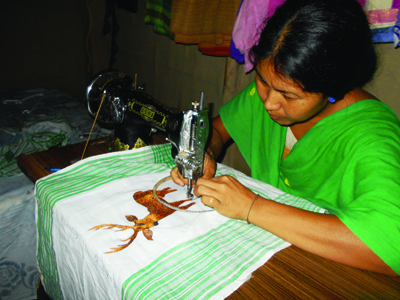LEARNING TO LIVE AND LET LIVE!
 Forests’ are deemed to be green lung of a nation. Indigenous socio-economically deprived communities have been living within the vicinity of forest. From dawn to dusk, forest villagers use forest resources for several household requirements and earn livelihood. Therefore, their social life is often structured by the availability of forest resources but this unwittingly causes the depletion of forests and Manas National Park was no exception to this.
Forests’ are deemed to be green lung of a nation. Indigenous socio-economically deprived communities have been living within the vicinity of forest. From dawn to dusk, forest villagers use forest resources for several household requirements and earn livelihood. Therefore, their social life is often structured by the availability of forest resources but this unwittingly causes the depletion of forests and Manas National Park was no exception to this.
Lying on the foothills of the Himalaya, Manas is the most stunning pristine wildlife habitat in India, comparable to the best in the world in the beauty of its spectacular landscape. It is also a UNESCO Natural World Heritage (in danger) site, a Project Tiger Reserve, an Elephant Reserve and a Biosphere Reserve - a unique distinction. This Brahmaputra Valley semih-evergreen forest Terrestrial Eco-region is also the richest in species of all Indian wildlife areas and the only known home for the rare and endangered Assam roofed turtle, hispid hare, Golden langur and Pygmy hog.
However, communities here too striped forests to meet their local needs without considering how long forests take to regenerate. Meanwhile, motivation and training, succeeded by guidance and entrusting responsibility to the local communities, increase forest cover and preserve it to ensure livelihood of forest communities. “With a view to create eco-friendly sustained livelihoods at the fringe villages and conducting a base line analysis of local skills and market linkages, we took up the idea of introducing alternative livelihood options like food processing, fishery, bee keeping, dairy farming, goat farming, vermicomposting, weaving etc.,” said Namita Brahma, Programme Manager, Community Based Conservation Programme (CBCP), Aaranyak.
“It has always been helping to eradicate poverty and unemployment,” Namita added.
The need to inculcate sustainable harvesting of forests by villagers is often realized too late. However today, Manas Nation Park has 116 self help groups from 53 fringe villages comprising local stakeholders with a key focus on the woman folks. Aaranyak, a local NGO in Assam, with an aim to minimize their dependency on the national park has been supporting these communities to provide a diversified and environmentally sustainable means of livelihood since 2012. A process of confidence building among the women themselves seems to have started. Namita also said that the women folk, being the true protector of forests, maintain balance between the utilization of forest products and preservation of forest along with its flora and fauna, culture and society at large. Forming and strengthening SHGs with the aim of making the poorest women economically empowered is necessary.
“It gives us immense contentment when our products are highly sold and demanded in well-known platforms,” said Krishna Basumatary during the 1st Assam International Agri Horti Show 2014. Krishna is the Secretary of Maidangshri Self Help Group for food processing in Manas National Park and SHG has collected several awards including the best SHG award in the year 2011. Some of the women folks of this group formerly went into the reserve forests everyday to collect thatch, fire wood and wild herbs while today the entire scenario changed.
“Our confidence boosted up when Maidangshri SHG won the 2011 prize for best SHG and since then we never looked back,” Krishna smiled!
The story began when this unique and fascinating landscape in the world despite its ecological importance of the forests has been subjected to great stress and continued to face multiple threats. The southern boundary of Manas National Park has thickly populated villages and the population is heavily dependent on the natural resources of national park for their livelihood. Through this capacity building initiative Aaranyak had convinced to offer sustained livelihood tool, leading to micro-scale enterprises to enhance self generating economy to the fringe communities of the national park besides reducing elephant depredation to an extent as honey bee acts as an effective deterrent to elephant.
Indigenous socio-economically deprived communities’ social life is often structured by the availability of forest resources but this unwittingly causes the depletion of forests and Manas National Park was no exception
Apart from this, with an aim to provide women hailing in the fringe villages, with yet another alternative sustainable livelihood option independent of forest resources, Aaranyak conducted a training programme on Mushroom cultivation. In this regard, Namita Brahma said, “The training programme did not remain restricted to women only. 35 participants including farmers of the fringe villages were also involved. So we decided to facilitate them with a livelihood option which is easy and profitable as well.”
- Shikha J Hazarika
To read full the text online subscribe to the magazine
OR
Get the copy of the magazine for details contact at email:This email address is being protected from spambots. You need JavaScript enabled to view it.


